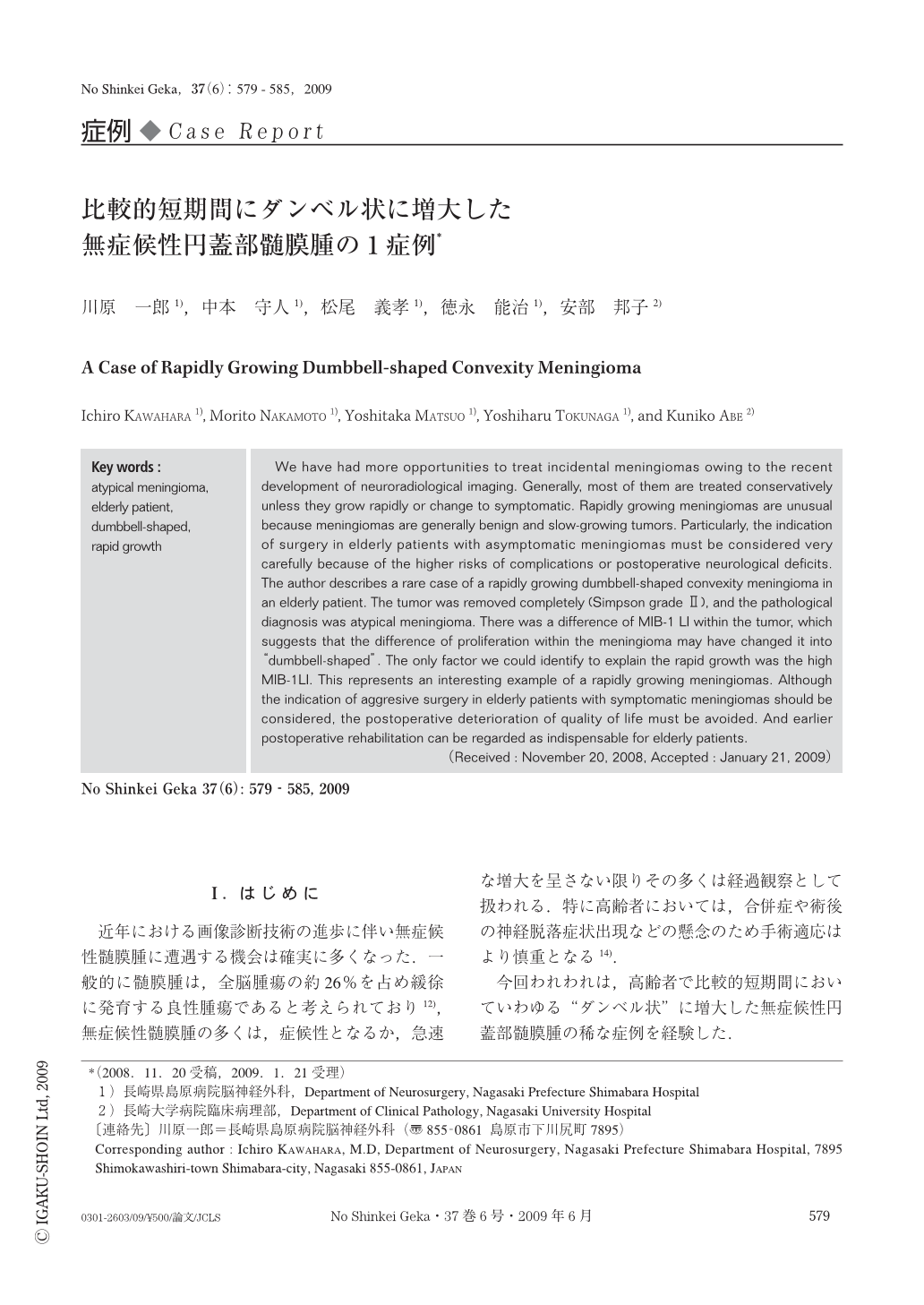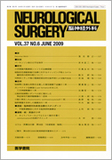Japanese
English
- 有料閲覧
- Abstract 文献概要
- 1ページ目 Look Inside
- 参考文献 Reference
Ⅰ.はじめに
近年における画像診断技術の進歩に伴い無症候性髄膜腫に遭遇する機会は確実に多くなった.一般的に髄膜腫は,全脳腫瘍の約26%を占め緩徐に発育する良性腫瘍であると考えられており12),無症候性髄膜腫の多くは,症候性となるか,急速な増大を呈さない限りその多くは経過観察として扱われる.特に高齢者においては,合併症や術後の神経脱落症状出現などの懸念のため手術適応はより慎重となる14).
今回われわれは,高齢者で比較的短期間においていわゆる“ダンベル状”に増大した無症候性円蓋部髄膜腫の稀な症例を経験した.
We have had more opportunities to treat incidental meningiomas owing to the recent development of neuroradiological imaging. Generally, most of them are treated conservatively unless they grow rapidly or change to symptomatic. Rapidly growing meningiomas are unusual because meningiomas are generally benign and slow-growing tumors. Particularly, the indication of surgery in elderly patients with asymptomatic meningiomas must be considered very carefully because of the higher risks of complications or postoperative neurological deficits. The author describes a rare case of a rapidly growing dumbbell-shaped convexity meningioma in an elderly patient. The tumor was removed completely (Simpson grade Ⅱ), and the pathological diagnosis was atypical meningioma. There was a difference of MIB-1 LI within the tumor, which suggests that the difference of proliferation within the meningioma may have changed it into“dumbbell-shaped”. The only factor we could identify to explain the rapid growth was the high MIB-1LI. This represents an interesting example of a rapidly growing meningiomas. Although the indication of aggresive surgery in elderly patients with symptomatic meningiomas should be considered, the postoperative deterioration of quality of life must be avoided. And earlier postoperative rehabilitation can be regarded as indispensable for elderly patients.

Copyright © 2009, Igaku-Shoin Ltd. All rights reserved.


